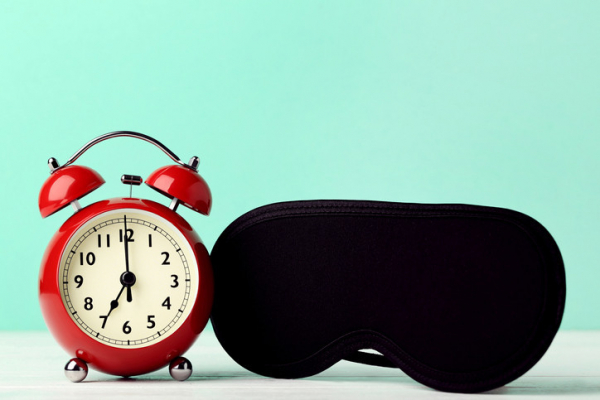
Will miscarriage care remain available?

When you first learned the facts about pregnancy — from a parent, perhaps, or a friend — you probably didn’t learn that up to one in three ends in a miscarriage.
What causes miscarriage? How is it treated? And why is appropriate health care for miscarriage under scrutiny — and in some parts of the US, getting harder to find?
What is miscarriage?
Many people who come to us for care are excited and hopeful about building their families. It’s devastating when a hoped-for pregnancy ends early.
Miscarriage is a catch-all term for a pregnancy loss before 20 weeks, counting from the first day of the last menstrual period. Miscarriage happens in as many as one in three pregnancies, although the risk gradually decreases as pregnancy progresses. By 20 weeks, it occurs in fewer than one in 100 pregnancies.
What causes miscarriage?
Usually, there is no obvious or single cause for miscarriage. Some factors raise risk, such as:
- Pregnancy at older ages. Chromosome abnormalities are a common cause of pregnancy loss. As people age, this risk rises.
- Autoimmune disorders. While many pregnant people with autoimmune disorders like lupus or Sjogren’s syndrome have successful pregnancies, their risk for pregnancy loss is higher.
- Certain illnesses. Diabetes or thyroid disease, if poorly controlled, can raise risk.
- Certain conditions in the uterus. Uterine fibroids, polyps, or malformations may contribute to miscarriage.
- Previous miscarriages. Having a miscarriage slightly increases risk for miscarriage in the next pregnancy. For instance, if a pregnant person’s risk of miscarriage is one in 10, it may increase to 1.5 in 10 after their first miscarriage, and four in 10 after having three miscarriages.
- Certain medicines. A developing pregnancy may be harmed by certain medicines. It’s safest to plan pregnancy and receive pre-pregnancy counseling if you have a chronic illness or condition.
How is miscarriage diagnosed?
Before ultrasounds in early pregnancy became widely available, many miscarriages were diagnosed based on symptoms like bleeding and cramping. Now, people may be diagnosed with a miscarriage or early pregnancy loss on a routine ultrasound before they notice any symptoms.
How is miscarriage treated?
Being able to choose the next step in treatment may help emotionally. When there are no complications and the miscarriage occurs during the first trimester (up to 13 weeks of pregnancy), the options are:
Take no action. Passing blood and pregnancy tissue often occurs at home naturally, without need for medications or a procedure. Within a week, 25% to 50% will pass pregnancy tissue; more than 80% of those who experience bleeding as a sign of miscarriage will pass the pregnancy tissue within two weeks.
What to know: This can be a safe option for some people, but not all. For example, heavy bleeding would not be safe for a person who has anemia (lower than normal red blood cell counts).
Take medication. The most effective option uses two medicines: mifepristone is taken first, followed by misoprostol. Using only misoprostol is a less effective option. The two-step combination is 90% successful in helping the body pass pregnancy tissue; taking misoprostol alone is 70% to 80% successful in doing so.
What to know: Bleeding and cramping typically start a few hours after taking misoprostol. If bleeding does not start, or there is pregnancy tissue still left in the uterus, a surgical procedure may be necessary: this happens in about one in 10 people using both medicines and one in four people who use only misoprostol.
Use a procedure. During dilation and curettage (D&C), the cervix is dilated (widened) so that instruments can be inserted into the uterus to remove the pregnancy tissue. This procedure is nearly 99% successful.
What to know: If someone is having life-threatening bleeding or has signs of infection, this is the safest option. This procedure is typically done in an operating room or surgery center. In some instances, it is offered in a doctor’s office.
If you have a miscarriage during the second trimester of pregnancy (after 13 weeks), discuss the safest and best plan with your doctor. Generally, second trimester miscarriages will require a procedure and cannot be managed at home.
Red flags: When to ask for help during a miscarriage
During the first 13 weeks of pregnancy: Contact your health care provider or go to the emergency department immediately if you experience
- heavy bleeding combined with dizziness, lightheadedness, or feeling faint
- fever above 100.4° F
- severe abdominal pain not relieved by over-the-counter pain medicine, such as acetaminophen (Tylenol) or ibuprofen (Motrin, Advil). Please note: ibuprofen is not recommended during pregnancy, but is safe to take if a miscarriage has been diagnosed.
After 13 weeks of pregnancy: Contact your health care provider or go to the emergency department immediately if you experience
- any symptoms listed above
- leakage of fluid (possibly your water may have broken)
- severe abdominal or back pain (similar to contractions).
How is care for miscarriages changing?
Unfortunately, political interference has had significant impact on safe, effective miscarriage care:
- Some states have banned a procedure used to treat second trimester miscarriage. Called dilation and evacuation (D&E), this removes pregnancy tissue through the cervix without making any incisions. A D&E can be lifesaving in instances when heavy bleeding or infection is complicating a miscarriage.
- Federal and state lawsuits, or laws banning or seeking to ban mifepristone for abortion care, directly limit access to a safe, effective drug approved for miscarriage care. This could affect miscarriage care nationwide.
- Many laws and lawsuits that interfere with miscarriage care offer an exception to save the life of a pregnant patient. However, miscarriage complications may develop unexpectedly and worsen quickly, making it hard to ensure that people will receive prompt care in life-threatening situations.
- States that ban or restrict abortion are less likely to have doctors trained to perform a full range of miscarriage care procedures. What’s more, clinicians in training, such as resident physicians and medical students, may never learn how to perform a potentially lifesaving procedure.
Ultimately, legislation or court rulings that ban or restrict abortion care will decrease the ability of doctors and nurses to provide the highest quality miscarriage care. We can help by asking our lawmakers not to pass laws that prevent people from being able to get reproductive health care, such as restricting medications and procedures for abortion and miscarriage care.
About the Authors

Sara Neill, MD, MPH, Contributor
Dr. Sara Neill is a physician-researcher in the department of obstetrics & gynecology at Beth Israel Deaconess Medical Center and Harvard Medical School. She completed a fellowship in complex family planning at Brigham and Women's Hospital, and … See Full Bio View all posts by Sara Neill, MD, MPH 
Scott Shainker, DO, MS, Contributor
Scott Shainker, D.O, M.S., is a maternal-fetal medicine specialist in the Department of Obstetrics and Gynecology at Beth Israel Deaconess Medical Center (BIDMC). He is also a member of the faculty in the Department of Obstetrics, … See Full Bio View all posts by Scott Shainker, DO, MS

How well do you worry about your health?

Don’t worry. It’s good advice if you can take it. Of course that’s not always easy, especially for health concerns.
The truth is: it’s impossible (and ill-advised) to never worry about your health. But are you worrying about the right things? Let’s compare a sampling of common worries to the most common conditions that actually shorten lives. Then we can think about preventing the biggest health threats.
Dangerous but rare health threats
The comedian John Mulaney says the cartoons he watched as a child gave him the impression that quicksand, anvils falling from the sky, and lit sticks of dynamite represented major health risks. For him (as is true for most of us), none of these turned out to be worth worrying about.
While harm can befall us in many ways, some of our worries are not very likely to occur:
- Harm by lightning: In the US, lightning strikes kill about 25 people each year. Annually, the risk for the average person less than one in a million. There are also several hundred injuries due to nonfatal lightning strikes. Even though lightning strikes the earth millions of times each year, the chances you’ll be struck are quite low.
- Dying in a plane crash: The yearly risk of being killed in a plane crash for the average American is about one in 11 million. Of course, the risk is even lower if you never fly, and higher if you regularly fly on small planes in bad weather with inexperienced pilots. By comparison, the average yearly risk of dying in a car accident is approximately 1 in 5,000.
- Snakebite injuries and deaths: According to the Centers for Disease Control and Prevention, an estimated 7,000 to 8,000 people are bit by poisonous snakes each year in the US. Lasting injuries are uncommon, and deaths are quite rare (about five per year). In parts of the country where no poisonous snakes live, the risk is essentially zero.
- Shark attacks: As long as people aren’t initiating contact with sharks, attacks are fairly uncommon. Worldwide, about 70 unprovoked shark attacks occur in an average year, six of which are fatal. In 2022, 41 attacks occurred in the US, two of which were fatal.
- Public toilet seats: They may appear unclean (or even filthy), but they pose little or no health risk to the average person. While it’s reasonable to clean off the seat and line it with paper before touching down, health fears should not discourage you from using a public toilet.
I’m not suggesting that these pose no danger, especially if you’re in situations of increased risk. If you’re on a beach where sharks have been sighted and seals are nearby, it’s best not to swim there. When in doubt, it’s a good idea to apply common sense and err on the side of safety.
What do Google and TikTok tell us about health concerns?
Analyzing online search topics can tell us a lot about our health worries.
The top Google health searches in 2023 were:
- How long is strep throat contagious?
- How contagious is strep throat?
- How to lower cholesterol?
- What helps with bloating?
- What causes low blood pressure?
Really? Cancer, heart disease and stroke, or COVID didn’t reach the top five? High blood pressure didn’t make the list, but low blood pressure did?
Meanwhile, on TikTok the most common topics searched were exercise, diet, and sexual health, according to one study. Again, no top-of-the-list searches on the most common and deadly diseases.
How do our worries compare with the top causes of death?
In the US, these five conditions took the greatest number of lives in 2022:
- heart disease
- cancer
- unintentional injury (including motor vehicle accidents, drug overdoses, and falls)
- COVID-19
- stroke.
This list varies by age. For example, guns are the leading cause of death among children and teenagers (ages 1 to 19). For older teens (ages 15 to 19), the top three causes of death were accidents, homicide, and suicide.
Perhaps the lack of overlap between leading causes of death and most common online health-related searches isn’t surprising. Younger folks drive more searches and may not have heart disease, cancer, or stroke at top of mind. In addition, online searches might reflect day-to-day concerns (how soon can my child return to school after having strep throat?) rather than long-term conditions, such as heart disease or cancer. And death may not be the most immediate health outcome of interest.
But the disconnect suggests to me that we may be worrying about the wrong things — and focusing too little on the biggest health threats.
Transforming worry into action
Most of us can safely worry less about catching something from a toilet seat or shark attacks. Instead, take steps to reduce the risks you face from our biggest health threats. Chipping away at these five goals could help you live longer and better while easing unnecessary worry:
- Choose a heart-healthy diet.
- Get routinely recommended health care, including blood pressure checks and cancer screens, such as screening for colorectal cancer.
- Drive more safely. Obey the speed limit, drive defensively, always wear a seatbelt, and don’t drive if you’ve been drinking.
- Don’t smoke. If you need to quit, find help.
- Get regular exercise.
The bottom line
Try not to focus too much on health risks that are unlikely to affect you. Instead, think about common causes of poor health. Then take measures to reduce your risk. Moving more and adding healthy foods to your meals is a great start.
And in case you’re curious, the average number of annual deaths due to quicksand is zero in the US. Still a bit worried? Fine, here’s a video that shows you how to save yourself from quicksand even though you’ll almost certainly never need it.
About the Author

Robert H. Shmerling, MD, Senior Faculty Editor, Harvard Health Publishing; Editorial Advisory Board Member, Harvard Health Publishing
Dr. Robert H. Shmerling is the former clinical chief of the division of rheumatology at Beth Israel Deaconess Medical Center (BIDMC), and is a current member of the corresponding faculty in medicine at Harvard Medical School. … See Full Bio View all posts by Robert H. Shmerling, MD

Does sleeping with an eye mask improve learning and alertness?

All of us have an internal clock that regulates our circadian rhythms, including when we sleep and when we are awake. And light is the single most important factor that helps establish when we should feel wakeful (generally during the day) and when we should feel sleepy (typically at night).
So, let me ask you a personal question: just how dark is your bedroom? To find out why that matters — and whether sleeping in an eye mask is worthwhile — read on.
How is light related to sleep?
Our circadian system evolved well before the advent of artificial light. As anyone who has been to Times Square can confirm, just a few watts of power can trick the brain into believing that it is daytime at any time of night. So, what’s keeping your bedroom alight?
- A tablet used in bed at night to watch a movie is more than 100 times brighter than being outside when there is a full moon.
- Working on or watching a computer screen at night is about 10 times brighter than standing in a well-lit parking lot.
Light exposure at night affects the natural processes that help prepare the body for sleep. Specifically, your pineal gland produces melatonin in response to darkness. This hormone is integral for the circadian regulation of sleep.
What happens when we are exposed to light at night?
Being exposed to light at night suppresses melatonin production, changing our sleep patterns. Compared to sleeping without a night light, adults who slept next to a night light had shallower sleep and more frequent arousals. Even outdoor artificial light at night, such as street lamps, has been linked with getting less sleep.
But the impact of light at night is not limited to just sleep. It’s also associated with increased risk of developing depressive symptoms, obesity, diabetes, and high blood pressure. Light exposure misaligned with our circadian rhythms — that is, dark during the day and light at night — is one reason scientists believe that shift work puts people at higher risk for serious health problems.
Could sleeping with an eye mask help?
Researchers from Cardiff University in the United Kingdom conducted a series of experiments to see if wearing an eye mask while sleeping at night could improve certain measures of learning and alertness.
Roughly 90 healthy young adults, 18 to 35 years of age, alternated between sleeping while wearing an eye mask or being exposed to light at night. They recorded their sleep patterns in a sleep diary.
In the first part of the study, participants wore an intact eye mask for a week. Then during the next week, they wore an eye mask with a hole exposing each eye so that the mask didn't block the light.
After sleeping with no light exposure (wearing the intact eye mask) and with minimal light exposure (the eye mask with the holes), participants completed three cognitive tasks on days six and seven of each week:
- First was a paired-associate learning task. This helps show how effectively a person can learn new associations. Here the task was learning related word pairs. Participants performed better after wearing an intact eye mask during sleep in the days leading up to the test than after being exposed to light at night.
- Second, the researchers administered a psychomotor vigilance test, which assesses alertness. Blocking light at night also improved reaction times on this task.
- Finally, a motor skill learning test was given, which involved tapping a five-digit sequence in the correct order. For this task, there was no difference in performance whether participants had worn an intact eye mask or been exposed to light at night.
What else did the researchers learn?
No research study is ever perfect, so it is important to take the conclusions above with a grain of salt.
According to sleep diary data, there was no difference in the amount of sleep, nor in their perceptions of sleep quality, regardless of whether people wore an eye mask or not.
Further, in a second experiment with about 30 participants, the researchers tracked sleep objectively using a monitoring device called the Dreem headband. They found no changes to the structure of sleep — for example, how much time participants spent in REM sleep — when wearing an eye mask.
Should I rush out to buy an eye mask before an important meeting or exam?
If you decide to try using an eye mask, you probably don’t need to pay extra for overnight shipping. Instead, follow a chronobiologist’s rule of thumb: “bright days, dark nights.”
- During the daytime, get as much natural daylight as you possibly can: go out to pick up your morning bagel from a local bakery, take a short walk during your afternoon lull at work.
- In the evening, reduce your exposure to electronic devices such as your cell phone, and use the night-dimming modes on these devices. Make sure that you turn off all unnecessary lights. Finally, try to make your bedroom as dark as possible when you go to bed. This could mean turning the alarm clock next to your bed away from you or covering up the light on a humidifier.
Of course, you might decide a well-fitted, comfortable eye mask is a useful addition to your light hygiene toolkit. Most cost $10 to $20, so you may find yourself snoozing better and improving cognitive performance for the price of a few cups of coffee.
About the Author

Eric Zhou, PhD, Contributor
Eric Zhou, PhD, is an assistant professor at Harvard Medical School. His research focuses on how we can better understand and treat sleep disorders in both pediatric and adult populations, including those with chronic illnesses. Dr. … See Full Bio View all posts by Eric Zhou, PhD